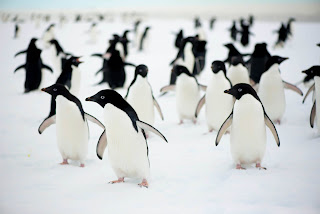The First Marine Park in the Antarctic

Around one-third of the world's Adélie penguins live in what will become Antarctica's largest Marine Protected Area (credit: A. Turney/Australasian Antarctic Expedition 2013-2014) It’s taken more than five years of bruising negotiations but on Friday the Convention on the Conservation of Antarctic Marine Living Resources made the wonderful announcement that the Ross Sea will become the first ever Marine Protected Area in the south. In Hobart the European Union and 24 nations hammered out a deal that more than one million square kilometres – the largest remaining pristine marine ecosystem left on the planet – will be protected for at least 35 years, a first in international waters. The practical upshot is fishing will be banned in a region equivalent in size to the combined areas of France and Spain where one-third of the world's Adélie penguins, one third of all Antarctic petrels, and over half of all South Pacific Weddell seals live. This new marine park will create a...
